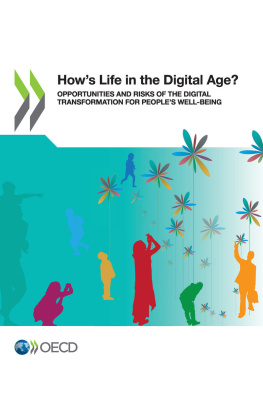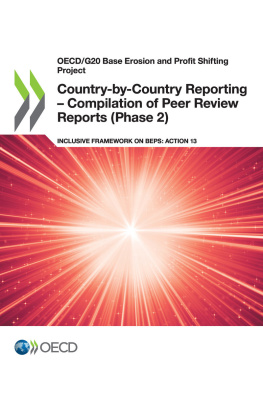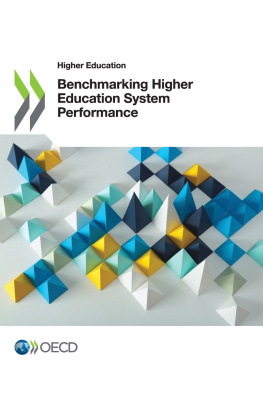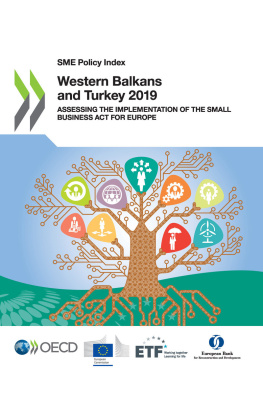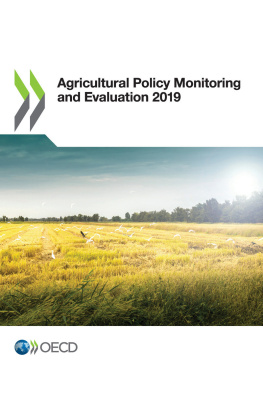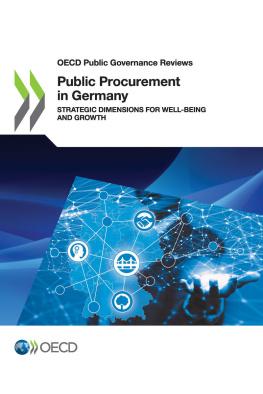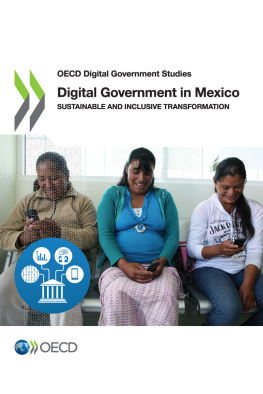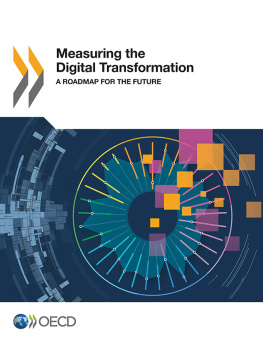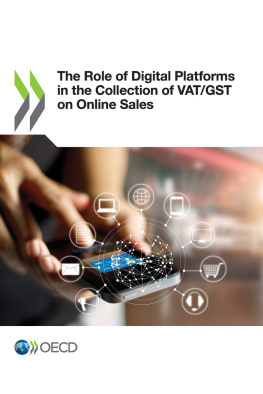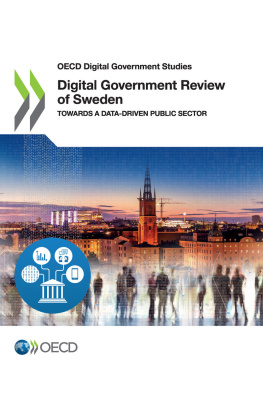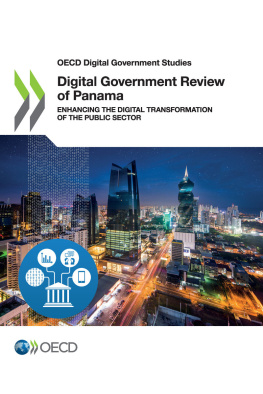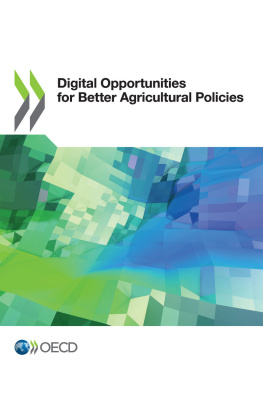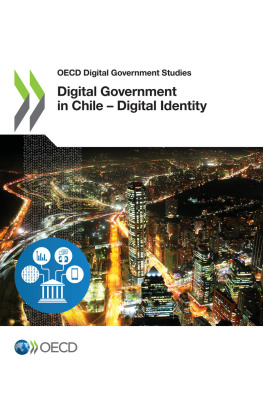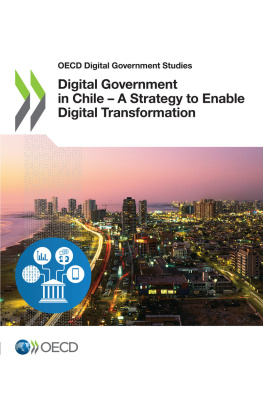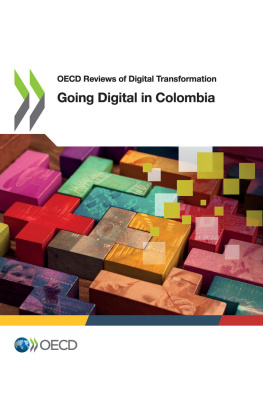OECD - How’s Life in the Digital Age?
Here you can read online OECD - How’s Life in the Digital Age? full text of the book (entire story) in english for free. Download pdf and epub, get meaning, cover and reviews about this ebook. year: 2019, publisher: OECD Publishing, genre: Politics. Description of the work, (preface) as well as reviews are available. Best literature library LitArk.com created for fans of good reading and offers a wide selection of genres:
Romance novel
Science fiction
Adventure
Detective
Science
History
Home and family
Prose
Art
Politics
Computer
Non-fiction
Religion
Business
Children
Humor
Choose a favorite category and find really read worthwhile books. Enjoy immersion in the world of imagination, feel the emotions of the characters or learn something new for yourself, make an fascinating discovery.
How’s Life in the Digital Age?: summary, description and annotation
We offer to read an annotation, description, summary or preface (depends on what the author of the book "How’s Life in the Digital Age?" wrote himself). If you haven't found the necessary information about the book — write in the comments, we will try to find it.
OECD: author's other books
Who wrote How’s Life in the Digital Age?? Find out the surname, the name of the author of the book and a list of all author's works by series.
How’s Life in the Digital Age? — read online for free the complete book (whole text) full work
Below is the text of the book, divided by pages. System saving the place of the last page read, allows you to conveniently read the book "How’s Life in the Digital Age?" online for free, without having to search again every time where you left off. Put a bookmark, and you can go to the page where you finished reading at any time.
Font size:
Interval:
Bookmark:
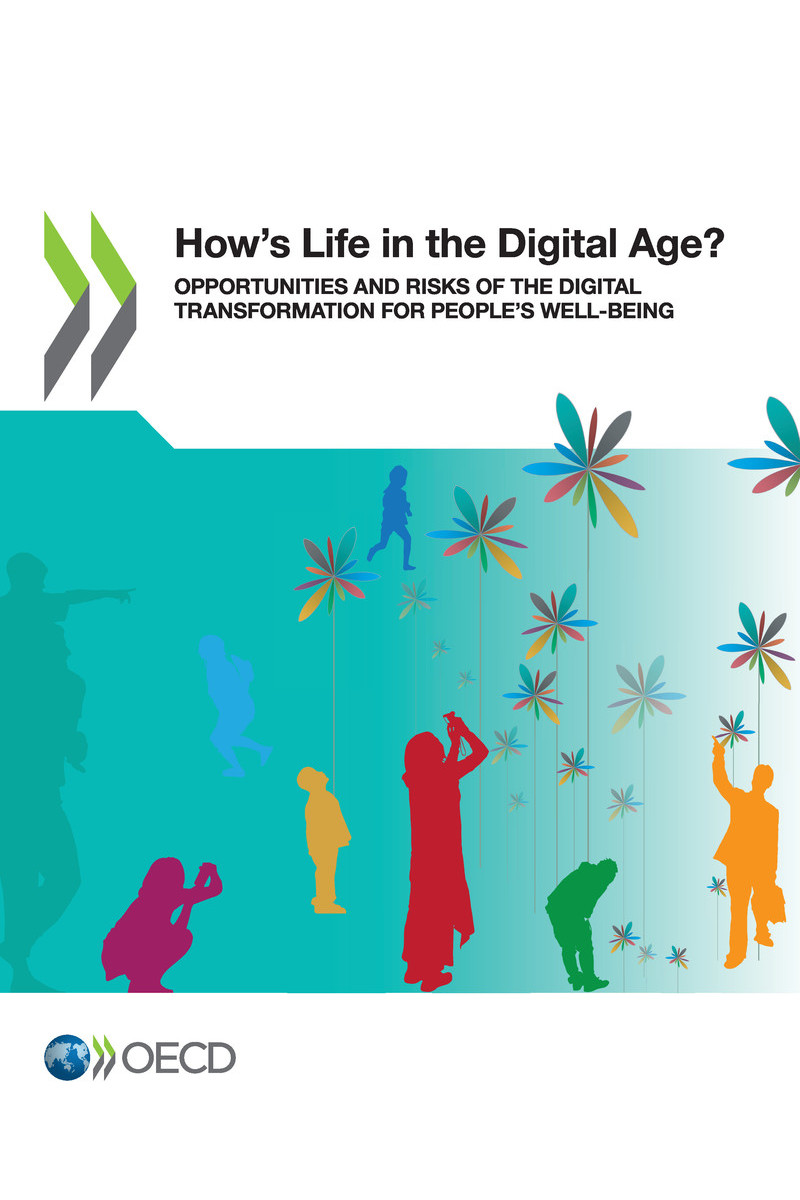
OECD (2019), How's Life in the Digital Age?: Opportunities and Risks of the Digital Transformation for People's Well-being , OECD Publishing, Paris.
https://doi.org/10.1787/9789264311800-en
Hows Life in the Digital Age? is the first topical report in the new Hows Life? monograph series. Hows Life? is the flagship publication of the OECD Better Life Initiative, which aims to promote Better Policies for Better Lives, in line with the OECDs overarching mission. While the main Hows Life? report is released every two years, a series of shorter monographs focusing on specific issues will now be published on a regular basis. Hows Life in the Digital Age? documents how the ongoing digital transformation is affecting peoples lives, based on the multi-dimensional framework used in Hows Life? to monitor progress in the key dimensions of peoples well-being. This report is also an input to the OECD Going Digital Initiative, which aims to describe the many facets of the digital transformation throughout a series of publications.
The report was prepared by the Household Statistics and Progress Measurement Division of the OECD Statistics and Data Directorate, with contributions from the Reform of the Public Sector Division in the Public Governance Directorate (Chapter 2). The lead author of the report was Vincent Siegerink, with contributions from Fabrice Murtin who also led the project. Marco Mira dErcole and Martine Durand supervised the project. Anil Alpman, Benot Arnaud, Christopher Jacobi, Christine Le Thi, Michal Shinwell, Laura Springare, Barbara Ubaldi, Joao Vasconcelos, Benjamin Welby are gratefully acknowledged for their contributions to the analysis. Anne-Lise Faron prepared the book for publication.
We are grateful to many colleagues around the OECD for their help, comments and insights, either on the draft text or on specific issues. This list includes, but is not limited to: Shardul Agrawala, Tracey Burns, Stijn Broecke, Duncan Cass-Beggs, Alessandra Colecchia, Paolo Falco, David Gierten, Stphanie Jamet, Daniel Ker, Molly Lesher, Dirk Pilat, Glenda Quintini, Luke Slawomirski, Mariagraza Squicciarini, Peter Van De Ven, Andrew Wyckoff and Jorrit Zwijnenburg. The report benefited from in-depth discussions with Peter Gluckman, Kristann Allen and members of the International Network for Government Science Advice (INGSA), which are gratefully acknowledged.
How does the digital transformation affect peoples lives and well-being? Digital technologies have radically changed the way people work, consume and communicate over a short period of time. It is necessary that statistics help understand the rapid transformation that is at stake. This first monograph of the Hows Life? series aims to meet this need, providing a comprehensive description of digital impacts on peoples life and underlining some important data gaps.
While several OECD reports have documented the effects of digital technologies on the economy and society, this report uses the Hows Life? well-being framework to assess how the digital transformation affects peoples life as a whole. Chapter 1 provides an overview of the methodology and results described in this report. The OECD well-being framework is used to review the impacts of the digital transformation on the 11 key dimensions of peoples well-being (income and wealth, jobs and earnings, housing, health status, education and skills, work-life balance, civic engagement and governance, social connections, environmental quality, personal security and subjective well-being). This chapter also looks at ICT access and use as a cross-cutting dimension of the digital transformation. A summary of a large number of existing studies highlights 39 key impacts of the digital transformation on peoples well-being. The review shows that impacts can be positive as digital technologies expand the boundaries of information availability and enhance human productivity, but can also imply risks for peoples well-being, ranging from cyber-bullying to the emergence of disinformation or cyber-hacking.
This report has assembled 33 indicators of key impacts of the digital transformation, including 20 indicators to monitor digital opportunities and 13 indicators to reflect digital risks. This empirical analysis can help policy-makers and concerned citizens to assess the digital situation in their country. However, empirical analysis has also to contend with important limitations, due to the lack of harmonised data and the imperfect coverage of key digital impacts. The international statistical community should invest to improve available information and to move this statistical agenda forward.
For each dimension of peoples well-being, Chapter 2 presents evidence on the opportunities and risks created by the digital transformation. This chapter builds on a review of a large number of scientific studies in a range of disciplines. The main insight from this review is that safe digital technologies improve the life of those who have the skills to use them. This message is two-sided. Benefiting from digital opportunities depends, first, on meeting some skills requirements, and second, on operating in safe digital environments. On the one hand, digital technologies can improve peoples life as they provide access to more information and services at a reduced cost: for instance, they simplify access to education, to health information, to consumption goods via online shopping, they cut transportation time via teleworking and improve the efficiency of energy use at home and at the city level; in sum, they make human activities more efficient. On the other hand, digital technologies entail a major inequality risk for society, as they introduce a digital divide between those who have the skills to use them and those who do not. These skills include pure digital skills but also the emotional and social skills associated with safely navigating the online world. Possessing this mix of skills, conveniently labelled as digital literacy, is a pre-condition for people to harmoniously combine their digital and real lives, and to avoid the mental health problems associated with abuses of digital technologies. The second type of digital risks relates to safety issues such as cyber-bullying and cyber-security breaches. In a nutshell, making the digitalisation work for peoples well-being would require building equal digital opportunities, widespread digital literacy and strong digital security.
Font size:
Interval:
Bookmark:
Similar books «How’s Life in the Digital Age?»
Look at similar books to How’s Life in the Digital Age?. We have selected literature similar in name and meaning in the hope of providing readers with more options to find new, interesting, not yet read works.
Discussion, reviews of the book How’s Life in the Digital Age? and just readers' own opinions. Leave your comments, write what you think about the work, its meaning or the main characters. Specify what exactly you liked and what you didn't like, and why you think so.

